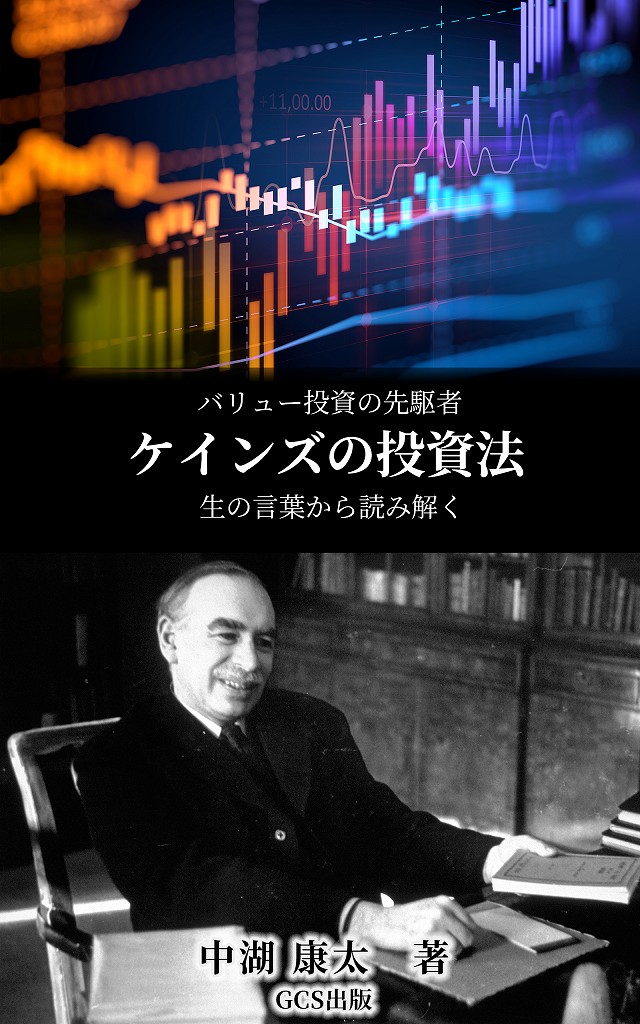エルダー・デンプスタ― - 一海運会社への大量投資
エルダー・デンプスタ―*について、1942年1月28日にスコットからの手紙があり、それに対して回答したケインズの書簡。
エルダー・デンプスターに大量に投資したことの釈明。ここでも、買い過ぎたことを認める一方、その正当性を主張している。
と同時に、ケインズの投資法の究極のポイントを説明している。それは、第一に、「資産価値と本質的な稼ぐ力(収益力)について満足でき、市場価格がこれらに比して割安な証券を買うこと」(本源的価値)であり、第二に、「時間と機会には限りがあり、十分な情報を持って、きちんと判断できる証券の数は多くない、一銘柄当たりの投資額をできるだけ大きくする」(少数銘柄への集中投資)、というものだ。(KNコメント)
* エルダー・デンプスタ―は、リバプールに本社を置き、19世紀後半から20世紀後半にかけて、西ヨーロッパと西アフリカを結ぶ、当時、英国最大の海運会社だった。1965年にオーシャン汽船会社と合併し、英国第三位の海運グループとなった。
【F.C.スコットへの書簡 1942年2月6日付】
親愛なるフランシス、
エルダー・デンプスターについて
さらに忙しくなっており、あなたの1月28日の手紙に詳細に返事していないことをご容赦ください。詳しい説明が必要だと思います。これは、私たちが以前から意見を交わしてきた主題でもあり、次の諸点に絞ってついて述べたいと思います。
(1) この特定の株式を買い過ぎたこと、より控えめであれば良かった、ということは仰る通りです。
(2) 1つの良い株が、10の悪い株よりも良い、というのは、あなたが言うように、論点をはぐらかしていたと言えます。十分な情報を持ち、適正な判断ができるひとつの投資の方が、ほとんど何も知らない10の証券への投資よりも良い、というべきでした。
(3) 私は、投資の成否を、売却益と評価益で測っています。しかし、それは、売却益をことさら重視することではありません。私のように、早めに売却益を取ろうとするのを避ける投資家は、極めて少ないでしょう。もし、優れた資産と稼ぐ力があるなら、目先の変動にとらわれず、将来のことを見るようにしています。これについて批判があることは承知しています。私の目的は、資産価値と本質的な稼ぐ力(収益力)について満足でき、市場価格がこれらに比して割安な証券を買うことです。このことに成功すれば、同時に安全第一と売却益を得ることになるでしょう。全ての株式、証券は、激しく上下するものですが、安全第一を重視し、それが成功すれば、いずれ売却益に結び付くでしょう。というのも、証券の安全性、卓越性、割安さがそなわっていれば、価格はいずれ上昇することになるからです。エルダー・デンプスターはその好例です。同株が近日中に上昇することを、特に期待していません。購入したのは、極めて安全で、短期的な変動を除けば、将来的には下落することにはならないだろう、と見えるからです。十分な情報を持って、きちんと判断できる証券の数は多くはありません。時間と機会には限りがあります。そのため、全体の投資額が大きくなるにしたがって、一銘柄当たりの投資額は多くなります。市場が許すなら、銘柄当たりの投資額をできるだけ大きくしたいと考えます。少数の証券からなること、一般に投資額に対して通常必要とされるよりも少ない一団となることを意味します。
(続く)
Comments and translation by Kota Nakako
2025/08/08
***************************************
(Original text)
To F.C. Scott, 6 February 1942
My dear Francis,
Elder Dempster
I have even less leisure than usual, and you must forgive me if I do not reply to your letter of January 28th at any length. It raises a subject which it would need a long essay to answer. Moreover, it is a subject on which we both of us have often expressed our views before.. So may I limit myself to the following few points.
(1) I confess that I bought too much of this particular security and would have done better to buy less.
(2) In saying that I preferred on good security to ten bad ones, of course, as you say, I was begging the question. I ought to have said that I preferred one investment about which I had sufficient information to form a judgement to ten sureties about which I know little or nothing.
(3) I consider capital profits and accruing income as the measure of success. But it is not the case that I aim at capital profits as such. There are very few investors, I should say, who eschew the attempt to snatch capital profits at an early date more than I do. I lay myself open to criticism because I am generally trying to look a long way ahead and am prepared to ignore immediate fluctuations, if I am satisfied that the assets and the earning power are there. My purpose is to buy securities where I am satisfied as to assets and ultimate earning power and where the market price seems cheap in relation to these. If I succeed in this, I shall simultaneously have achieved safety-first and capital profits. All stocks and shares go up and down so violently that t safety-first policy is practically certain, if it is successful, to result in capital profits. For when the safety, excellence and cheapness of a share is generally realised, its price is bound to go up. The Elder Dempster case is a very good example of this. I have no particular expectation of this share going up at any early date. I picked it because it seemed to me exceedingly safe and, apart from short-term fluctuations, unlikely to go down in the years ahead.
I am quite incapable of having adequate knowledge of more than a very limited range of investments. Time and opportunity do not allow more. Therefore, as the investible sums increase, the size of the unit must increase. I am in favour of having as large a unit as market conditions will allow and, apart from a small group of securities, this generally means a smaller unit than would be made necessary, this generally means a smaller unit than would be made necessary by the size of the investible fund.
(to be continued.)
Source: The Collected Writings of John Maynard Keynes, Economic Articles and Correspondence: Investment and Editorial, Vol. 12















